How High is the Upper Mustang Trek?
The Upper Mustang Trek has a highest point of 4,280 m at Chogo La Pass. The rest of the trek, however, is between 2,800 and 3,900 meters, so it is moderately high in altitude. Despite the high altitude, the gradual ascent allows your body to acclimatize.
With no sudden changes in altitude and a well-planned itinerary, the 14 Days Upper Mustang Trek is suitable even for novice high-altitude trekkers with a good fitness level.
How to Reach the Upper Mustang?
Our Upper Mustang Trek starts off from Pokhara, the entrance to the Annapurna region. As part of this package, you will be driven from Kathmandu to Pokhara in a tourist bus, providing a scenic drive through Nepal's undulating countryside. However, if you are short of time and would rather not spend this long journey in a tourist bus, there are flights between Pokhara and Kathmandu for an extra charge.
From Pokhara, you will take a short domestic flight to Jomsom skipping the long and bumpy road journey. Your trekking will start at Jomsom, from where you head towards Lo Manthang. The same trail will be followed while returning, ensuring a comfortable and smooth traveling experience for your trek.
All the transportation on the 14 days Upper Mustang Trek is included in your package and is arranged by us for a hassle free journey.
When is the Best Time And Seasons to Trek Upper Mustang?
Weather plays a vital role in determining how your trek will unfold, and it is very crucial to choose the right season for your trek to any destination.
It is possible to trek Upper Mustang throughout the year, as there are different perks to the distinct beauty of trekking in different seasons. Spring and autumn are the two seasons considered the best time to visit Upper Mustang, as these seasons offer a lot to visitors.
The spring season is an ideal time to trek Upper Mustang. During this season, the weather is delightful, with clear skies and moderate temperatures. The other favorable season for Upper Mustang trekking is autumn. It is clear weather with moderate temperature and thus a good time for trekking. The skies are normally clear blue, providing stunning views of the mountains and the scenery around.
Trekking in the Upper Mustang can be difficult during summer or monsoon time as there may be rainfall and sometimes landslides. However, since this area falls under the rain shadow area, it gets far less rainfall compared to the rest of Nepal making it possible to trek.
Winter renders Upper Mustang colder with snow. Trekking in winter needs careful planning and appropriate gear to deal with the cold. But the area is extremely dry in winter, and the scenery of snow-laden landscapes can be breathtaking.
Thus, keeping everything from weather, trail and temeprature in reagrds, the best time to trek to Upper Mustang is during Spring and Autumn.
What is the Difficulty Level of the Upper Mustang Tour?
Our Upper Mustang Tour and Trek fall under the Moderate grade trek that involves walking on a varied landscpaes for over 10 days in higher altitude.
You must be physically fit to complete this journey and it is beneficial to have some previous trekking or hiking experience. As the duration of this grade of the trek is 14 days, the trek to Upper Mustang is most suitable for trekkers looking for a challenging and exciting trek in a remote part of Nepal.
During the trek, you will have to walk on a rugged trail involving several ascending and descending steps. It also includes a high-altitude walk, which brings the risk of altitude sickness, thus making the overall trek even more challenging.
Elevation Profile and Terrain of the Upper Mustang
You will start the Upper Mustang trek in Jomsom (2,720 m) and ascend gradually through villages like Chele, Ghami, and Charang to Lo Manthang at 3,840 m.
Altitudes like these provide excellent mountain views but aren't so high as to present serious altitude issues. You further stay in Lo Manthang for one more extra day providing your body the acclimatization.
On your way back, you will reach till the height of 4200m and then continue to descend. Interms of terrain, the Upper Mustang Trek offers the most diverse landscape from the greenery in the lower altitude to the dry arid desert like landscape in the higher altitude and snow peaked mountains.
The trails are well marked, with some steep sections and high passes, but no technical climbing is required. It's a rewarding trek for anyone seeking a mixture of history, culture, and Himalayan desert landscape.
Can Beginners Complete the 14 days Upper Mustang trekking?
Yes, beginners can certainly trek to Upper Mustang, easily so if you have a moderate level of physical fitness and a good sense of adventure. The trek is not about steep ascents or highly elevated passes like many of the Himalayan routes, but includes easy walking days too.
What is beginner-friendly about Upper Mustang is the gentle ascent, well-marked trails, and help of experienced guides from Himalayan Recreation. With meticulous preparation and pacing, even first-time trekkers can enjoy this culturally and scenically rich trip to Upper Mustang.
How does Himalayan Recreation support different levels of trekkers during the Upper Mustang Trip?
At Himalayan Recreation, we ensure that experienced trekkers as well as first-time trekkers are properly taken care of on the Upper Mustang Trek. Our guides are trained at high altitude, and our itinerary is organized for acclimatization and comfort.
Regardless of whether you need extra days to acclimatize, a customized itinerary, or a relaxed trekking pace, we tailor the experience to meet your needs. With 24/7 support, porter services and extensive briefings, you'll always be safe, well-prepared, and confident on the trail no matter your trekkers' level of experience.
How to Get Ready for the Trek to Upper Mustang in 2025 and 2026?
Being physically fit and trained is essential for any journey in the Himalayas, especially for a long 14 days journey like Upper Mustang. It is vital to keep yourself fit with no health concerns to complete the trek without any problems.
As the trip leads you to an altitude of over 4000m, it involves walking on a rugged trail at a high altitude. You must have high stamina and the ability to walk for over 5 hours on average each day.
Before embarking on the journey, make sure you are fit and healthy. You can train for the Mustang trek by attempting to hike or walk for a few hours a day. You can also try doing full-body strength workouts twice per week to improve your general body strength.
After physical fitness, make sure you have all the essential items, including appropriate clothing and gear, ready for the journey.
How fit must you be for Upper Mustang Trekking?
Although our 14 days Upper Mustang package is not a challenging trek, you have to be moderately fit complete the trip. As the trek demands walking for many hours a day on mixed terrains.
Physically, you must be in good health with the ability to walk for a few hours a day. If you are looking for a different trekking experience in Nepal with some remoteness to it, then there is no better option than this for you.
We recommend you to go on a couple of treks and hiking tours prior to this trek to Upper Mustang so that it becomes an easy walk. You may also attempt to do physical exercises in order to enhance overall body endurance.
This 14 days Upper Mustang trip perfectly fits adventure seekers looking for a medium-length trip in the Himalayas and looking forward to making memories of a lifetime.
How to Prevent Altitude Sickness on the Upper Mustang Trek?
While the Upper Mustang Trek does not ascend over 4500m, altitude sickness still becomes a problem at and above 3,000 meters. Trekking to Upper Mustang requires proper acclimatization and caution against altitude sickness at the right time.
Your safety is our utmost priority at Himalayan Recreation with a properly planned itinerary and expert guidance.
Important Safety Precautions:
- Planned Acclimatization: We take a rest day in our 14 days itinerary at Lo Manthang to acclimatize to the high altitude.
- Moderate Trekking Hours: Walking hours are restricted to 6 hours a day to avoid exhaustion.
- Hydration and Diet: Keep yourself well-hydrated and avoid drinking alcohol to minimize risks of altitude sickness.
- Expert Guidance: Our experienced guides of 15+ years carry an oximeter, trek map, and compass to navigate and maintain safety checks.
- Weather Updates: We keep ourselves informed about the weather to provide a hassle-free journey.
With Himalayan Recreation, you are in safe hands for a memorable and safe trekking experience in the Upper Mustang area!
What if there is emergency and need for evacuation during the trek to Upper Mustang?
In case of any emergency situation during the trek to Upper Mustang, Himalayan Recreation will be there for 24/7 assistance. With quick communication between guides and our team in Kathmandu, the situtaion will be handled.
Further, our guides are trained in mountain rescue procedures and first aid. If required, we arrange helicopter evacuations immediately, with full support for insurance claims. Your safety is our top priority, so you can enjoy the journey without concern while trekking with Himalayan Recreation.
What to Pack for My Upper Mustang Journey?
Here we have prepared a list of all the necessary trekking gear and equipment for the journey. The region’s high altitude and cold conditions demand reliable, high-quality gear and clothing. Don’t worry, most of the equipment can be easily purchased or rented in Kathmandu if you don’t already have it.
We also provide you with sleeping bag, duffle bag and trekking poles if needed. Below is the packing list for the Upper Mustang Trek.
- Clothing -Baselayer -Insulation layer -Third layer
- General Trekking Gear -Trekking trousers and shirts -Trekking shorts -Waterproof shell jacket and trousers -Underwear
- Headwear -Hat -Beanie -Neck gaiter
- Handwear & Footwear -Inner Gloves -Outer insulated gloves -Hiking boots -Trekking shoes/sandals -Hiking socks -Warm thermal socks -Gaiters
- Bag & Backpackers -Duffel bag -Backpack -Day back -Raincover -Drybag
- Sleeping Gear -Sleeping bag -Liner -Earplugs
- Poles & Headgear -Trekking poles -Sunglasses -Headlight
- Important Accessories -Water bottle/Hydration bladder -Towel -Pee funnel -Lock -Waterproof bag
- Extra Accessories -Camera -Portable charger -Books -Cards -Passport, Money
- Medications & Toiletries: Water purification tablet, Isotonic powder, Diamox, Common Medications, First aid kit, Sunscreen, Baby wipes, Toiletries, Plasters and Hand Sanitizer
How are the Accommodation Facilities during the Upper Mustang Trekking?
Our Upper Mustang Tour package offers you comfortable lodging throughout the entire tour, with actual teahouse accommodations amidst the Himalayas. You will be stayed in 3-star category hotels in Pokhara and Jomsom with snug rooms including attached bathrooms, hot showers, WiFi, and charging facilities inside the rooms. Improved lodging also can be made in Pokhara at a supplemental fee if desired.
Accommodation throughout the trek will be in teahouses and lodges locally. The amenities vary with altitude:
- Lower Elevations: Basic rooms with Western flush toilets, free Wi-Fi, and room charging.
- Higher Elevations: Simple but warm and comfortable rooms with communal bathrooms, minimal power, and no wireless.
- You can be charged an Extra Charges in Higher Charging Altitudes of electrical appliances, Hot showers on hot water, WiFi connection
What kind of Food You Will Have on the Upper Mustang Tour Package?
Our package includes three meals a day: breakfast, lunch, and dinner during your Upper Mustang Trek from Pokhara to Pokhara. You will enjoy a variety of local and international dishes available at the teahouses and lodges along the route. As this region is remote and restricted, food options may be limited at higher altitudes, but you will still have nutritious and energizing meals throughout the trek.
- Breakfast: Traditional Tibetan bread, eggs, potatoes, porridge, pancakes, and soup.
- Lunch and Dinner: Dal Bhat (lentil soup, rice, and vegetables), fried rice, noodles, momo (dumplings), and sometimes Western dishes like pasta, pizza, and sandwiches in the lower regions.
- Hot Beverages: Tea and coffee will be provided in the morning
Drinking Water Facilities on the Upper Mustang Trek
Drinking water is not provided in the package, but you can fill your bottles at tap water stations along the route. Tap water is not safe for drinking without purification, so we strongly suggest that you bring water purification tablets or a filtering bottle.
Alternatively, you can purchase bottled mineral water at extra cost from lodges and teahouses. In an attempt to promote eco-trekking, we recommend trekkers to use environment-friendly water purification methods and help reduce plastic waste.
Who Will Be My Guide and Porter on the Upper Mustang Trek?
Your tour to Upper Mustang with Himalayan Recreation will be guided by our extremely qualified, experienced English-speaking guides in the Mustang region. Our guides will provide full airport to airport services with detailed briefing and introduction to local culture, history, and local tradition with high-level guarantee for your safety and comfort throughout the trip.
To add to your trekking experience, a porter is included in your package deal to transport baggage. Our porters can carry 25 kg max (total weight for 2 people), and you get to soak in the views and sounds and experiences of amazing landscapes and people.
As an officially registered trekking agency, we give good attention to safety and satisfaction at all times and make sure that you are in very competent hands every step of the way. Let us take you through the wonders of Upper Mustang for a trip to remember!
Permits and Entry Requirements for the Upper Mustang Trip
The Upper Mustang region is a restricted area, so the permits and entry requirements varies from other region. To trek to Upper Mustang, you need three permits in total, all of which will be taken care by us and is included in the package.
The required permits are:
- Restricted Area Permit (RAP)
- Annapurna Conservation Area Permit (ACAP) and
- Trekking Information Management System (TIMS) cards.
Do I need Travel Insurance for trekking to Upper Mustang?
Yes, Upper Mustang Trek need travel insurance. Since this is a restricted, remote, and high-altitude region, travel insurance is mandatory. Your policy must cover trekking in high altitude, emergency helicopter evacuation, and medical expenses.
We need a copy of insurance prior to starting the trek as it is your fall-back option in case of altitude sickness, accidents, or unexpected emergencies, completely assuring you of peace of mind on your trekking adventure.
Exploring the Hidden Kingdom of Nepal: What awaits you on the Upper Mustang Trek?
Our Upper Mustang Trek is an exceptional adventure that reveals the hidden kingdom in Nepal. As you embark on the Mustang journey, you will be welcomed by a unique cultural experience, unlike any other region.
The region's Tibetan-influenced culture and architecture will make you feel as if you have traveled back in time. The ancient monasteries, traditional villages, and captivating traditions will leave you enchanted.
Furthermore, the stunning landscapes of deep gorges, barren cliffs, and hills, with the backdrop of the panoramic views of the Annapurna and Dhaulagiri mountain ranges, will take your breath away.
Prepare to witness the natural and cultural side of Nepal like never before with our tour package.
Experience Tiji Festival 2025 in Upper Mustang!
The Tiji Festival is one of the most significant festivals celebrated in the Upper Mustang region of Nepal. It is a three-day annual festival that presents the rich Tibetan Buddhist legacy and myth of the region. The festival is held during the spring season, usually in May.
Tiji is derived from the word "ten che," which means "the hope of Buddha Dharma lasting in all worlds." The festival is centered around the myth, which tells the story of a god named Dorje Jono battling against his demon father to save the kingdom from destruction.
Upper Mustang people dress up in their traditional attire for the Tiji Festival and congregate at Lo Manthang, the walled city. The most important part of the festival is the vibrant masked dances of the monks. This festival celebrate from 24th May to 26th May in 2025.
It is an exclusive experience on your part to witness Buddhist rituals and traditions centuries old being followed. Being able to see this colorful festival is not only a feast for the eyes but a cultural and spiritual experience that remains with you for a lifetime.
What does a day look like during the 14 Days Upper Mustang Trek itinerary?
A typical day on the 14 Days of Upper Mustang Trek itinerary is filled with adventure, cultural exploration, and breathtaking landscapes. Your day begins with a hearty breakfast in the serene environment as the first rays of sunlight illuminate the stunning mountains.
You start walking after breakfast amidst varied landscapes and villages. On the trek, you notice several ancient monasteries, prayer flags, and villages. You have lunch at a teahouse in one of the villages en route.
After lunch, Again you will start your trekking while observing the varied landscapes, crossing bridges, and arriving at the day's predetermined destination. The trekking for the day concludes in the late afternoon, and you can unwind while taking in the grandeur of the mountains and landscapes.
How to Book Your Mustang Trek with Himalayan Recreation?
We offers a hassle-free booking process for the Upper Mustang trek booking. If you want to make the process easier, we recommend booking your Mustang Trek in advance, especially during peak seasons. We require a 20% advance payment to hold your booking, and the remaining payment is due in Kathmandu (in USD cash if possible, though credit cards are also accepted).
All you have to do is fill a simple booking form on our website after choosing your desired date. If you want customization, you can directly reach out to us in WhatsApp or Email.
We are also happy to organize last-minute trips! For last-minute bookings, we require at least 2 pax booking together, and full payment must be completed 24 hours before the trek departure.


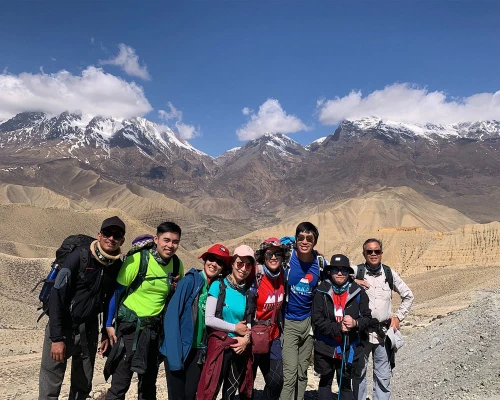
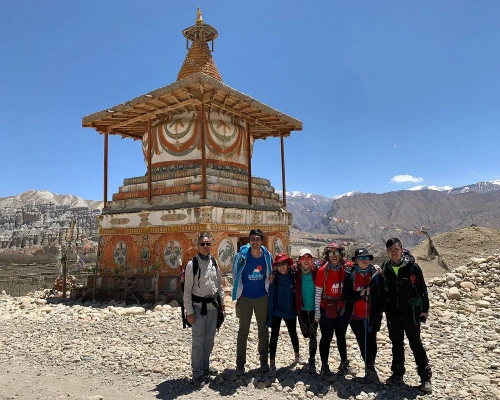
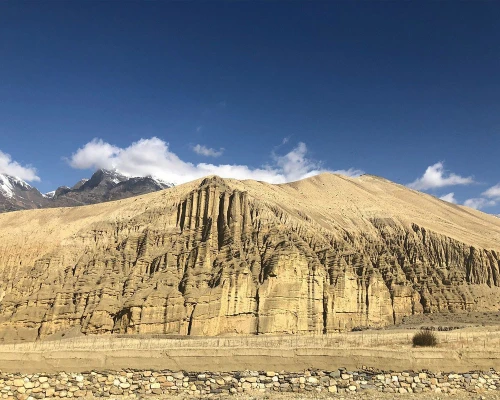
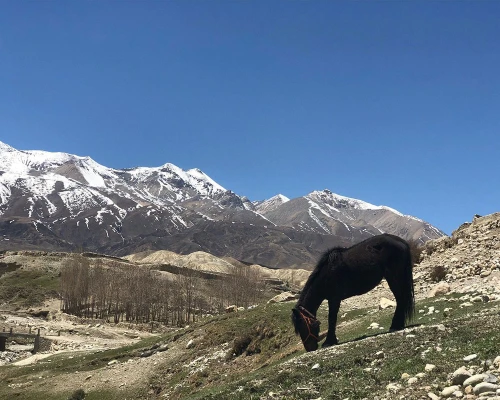
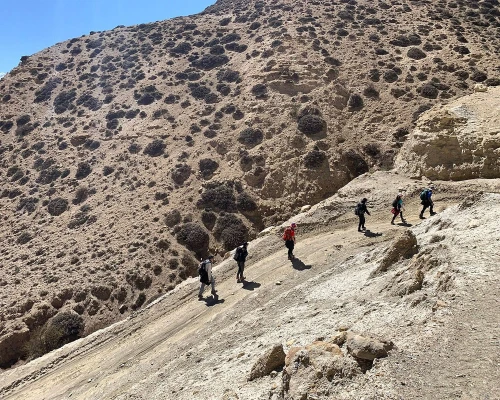
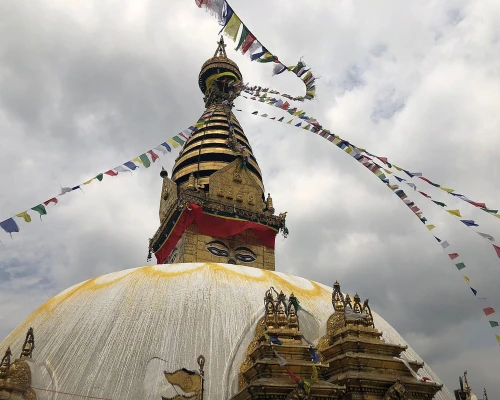
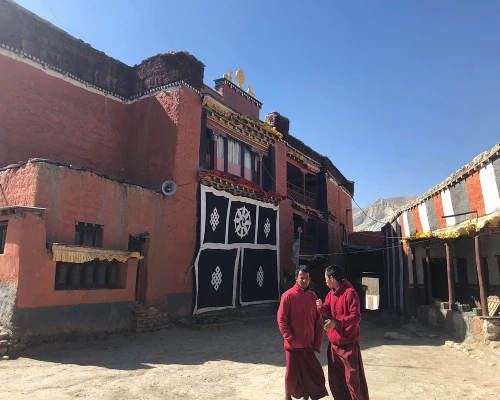


 2 reviews
2 reviews